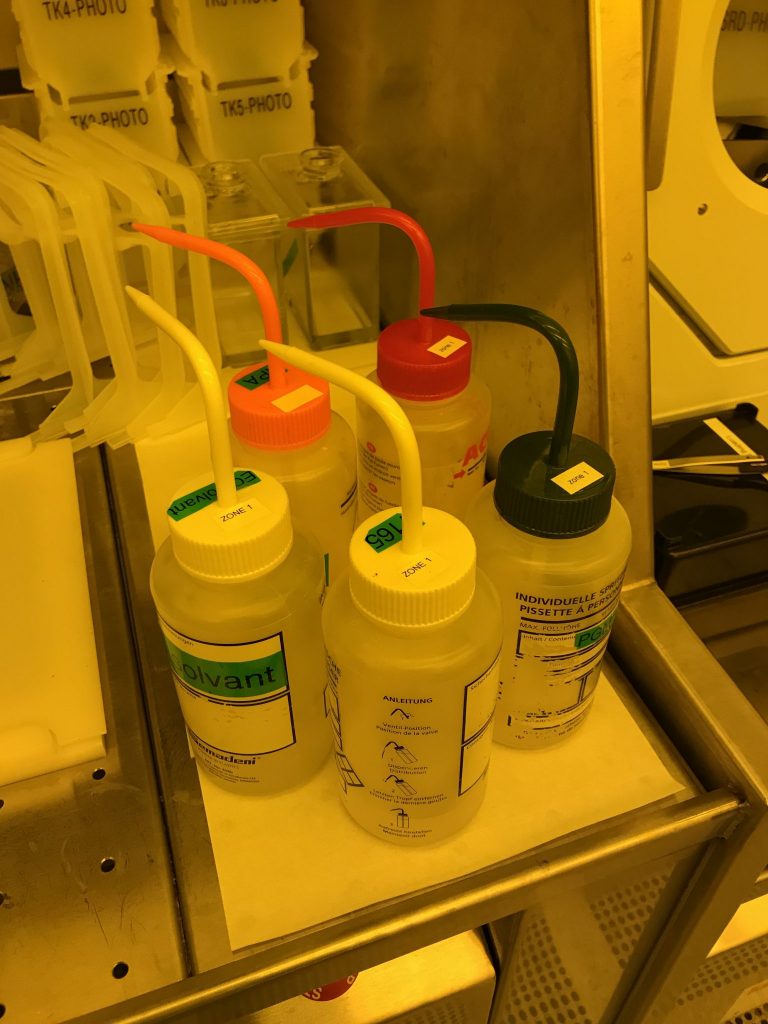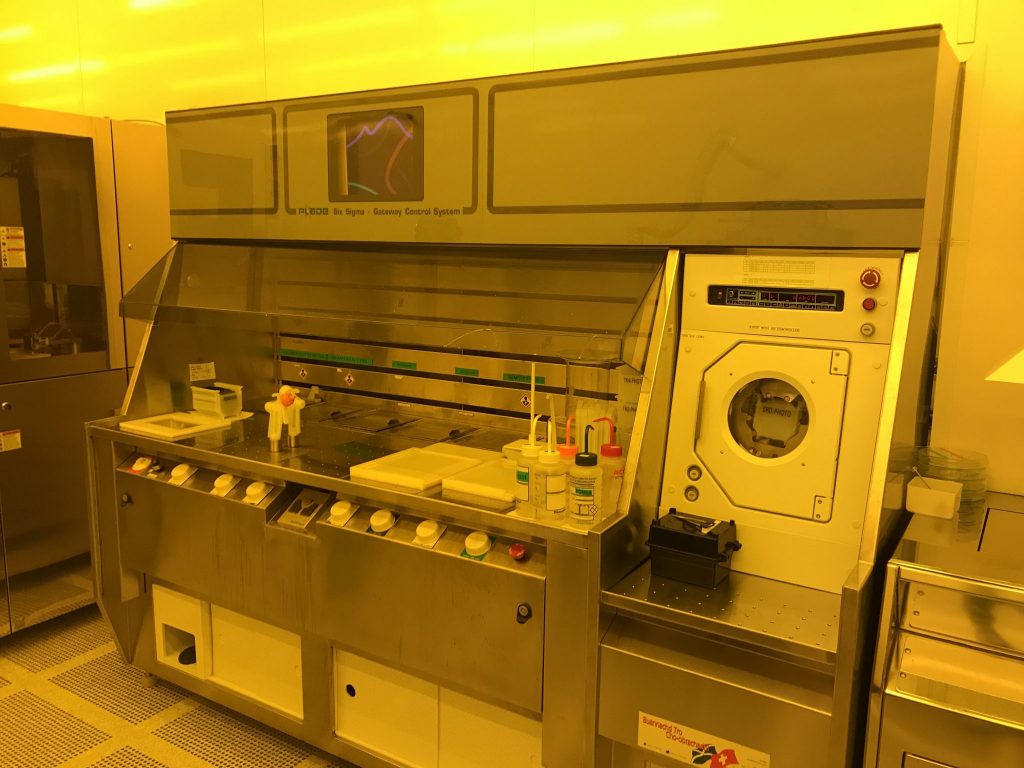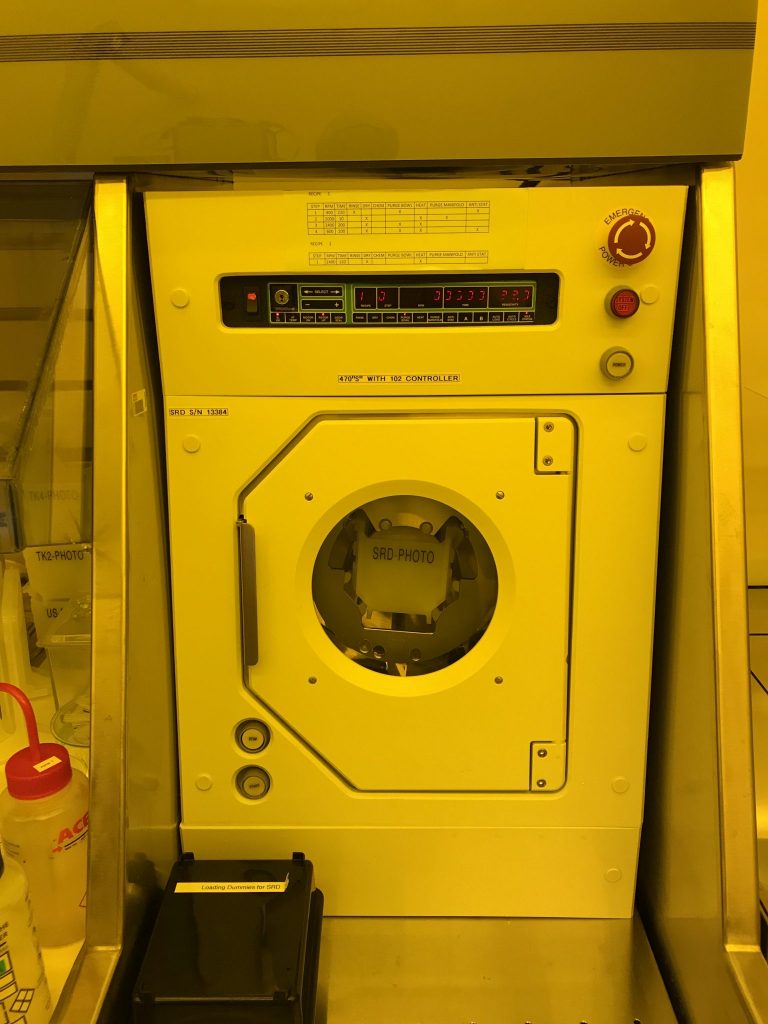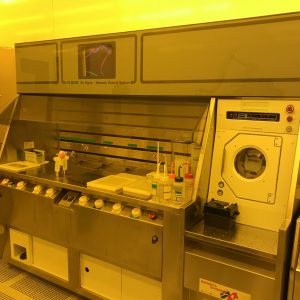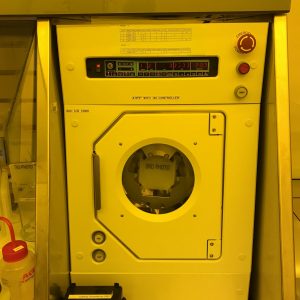To be read first:
- SAFETY OPERATOR MANUAL TO OPERATE ON CMi WETBENCHES (HERE)
- Good working practice: When done, empty beakers in the dedicated waste bottles. Clean the work area of glass beakers, paper wipes, tweezers and make sure it is dry (no unidentified liquid).
- Please immediately inform the CMi staff in case of problems with the equipment.
RESERVATION RULES AND BOOKING FEES POLICY:
- Reservation names must correspond to operators.
Contents:
I. Introduction
The plade wet bench in Zone 1 is dedicated to wet processes involving photoresists with solvent chemistry only.
The processes that are allowed on this bench are:
- Photoresist stripping for metal lift-off on wafer batches (SVC-14 – DMSO)
- Photoresist stripping for metal lift-off on single wafers (SVC-14 – DMSO)
- General wafer cleaning (acetone, IPA, N2 drying)
- Back-side rinse on wafer batches after lithography steps (SRD)
Any other processes involving solvent chemistry, but not listed above, should be discussed with the equipment responsible.
Although no dangerous chemicals are used on this bench and safety dressing is not required, we encourage users to read and understand the wet bench safety manual.
II. Equipment description
Actual configuration:
- Ultrasonic bath (US): SVC14
- Tanks PT1, PT3, PT4: SVC14
- Tank PT2: IPA
Semitool SRD unit operation:
- Two programs : N°1 rinse and dry / N°2 dry only
- Operation: load cassette, close the door, press “stop” then “start”.
The system is always on and login is necessary only for using the US bath, DI water baths, the N2 gun, and the spin-rinse-dry (SRD) unit.
Chemicals:
Chemicals that are allowed on the plade wet bench are:
- acetone (red)
- IPA (orange)
- PGMEA (blue-green)
- SVC-14 / DMSO (white, check label)
Make sure to empty used chemicals in the appropriate waste bottles!
